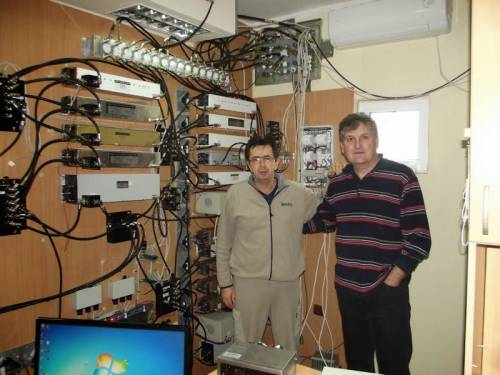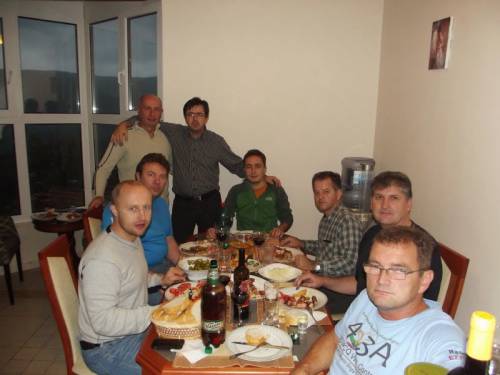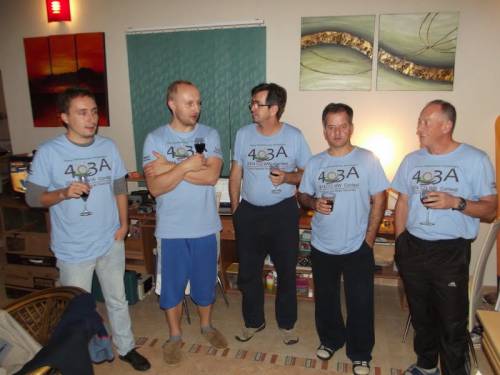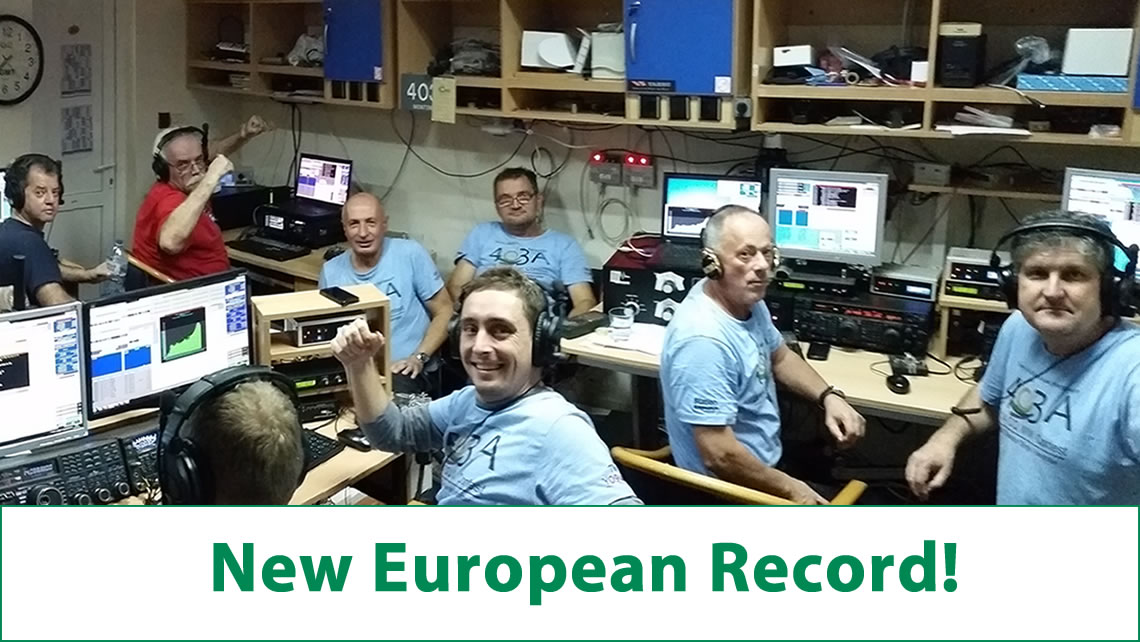
- Zoran Mladenovic, YU1EW
CQWW CW 2014
The success of the 1st place Europe (claimed) in CQWW phone boosted our hopes of similar fortunes in the CW leg @ 4O3A. One month later, the majority of the crew returned and the focus was very much on setting a new EU record.
As always the SSB crew were the guinea pigs and there were a few tweaks to be made in the setup. We needed more flexibility from the SSC-XL system.
The Sky Sat software team were tasked with providing a pop-up within the logging program which effectively shows the status of the current transmitting station.
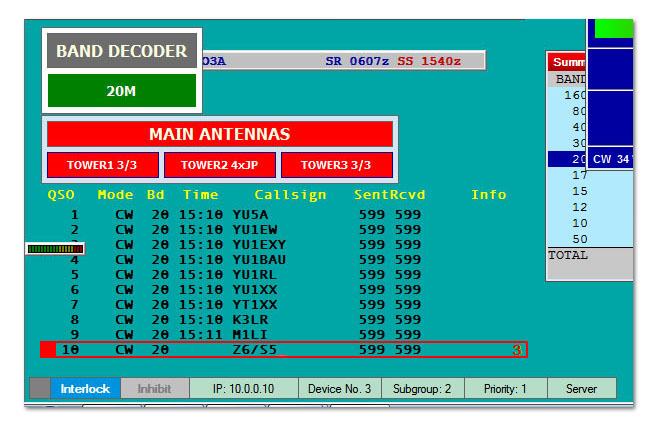
With this in place we then separated the RUN and MULTIPLIER networks. In the Multi-Single category, these two teams are independent in their “real-time operations”. That said, all the units, in both networks, need to preserve and share data from the antenna switching matrix. In most cases our RUN station uses three stacks in three distinct directions. Occasionally, however (say where a rare multiplier is the target), the in-band station has the possibility of stealing one of RUN stacks. During that period the smaller in-band antenna is pushed to the RUN, ensuring three directions are preserved. Such a system enables any RUN stack to be grabbed by any MULT station. The SSC-XL ensures interlocking and hot switching is preserved at all times. WinTest sits on a separate network for logging/timing data.
Two weeks prior to the CW event the SSC-XL firmware was tested and ready to be implemented. Ranko (4O3A) asked me to join him to ensure the setup was complete well before the contest. I obliged, and flew to Montenegro. Ranko and Boro (4O6Z) joined me preparing the station for the arrival of the team and another 48hr marathon. We fixed many of the “niggly” issues spotted in the phone leg: some cosmetics, secured intra-station cabling, improved the 12V DC supplies, and did some repairs to our spare equipment. Boro looked after some rotator issues which was a major issue during CQWW phone.
The station was finally ready for another test…and we pondered ”what will the propagation gods throw at us for the contest?”
With crew members coming from a far (Estonia, Italy, Serbia on so on..) we were in daily contact over email (a little easier than 40m phone )….Tonno, ES5TV was responsible for the operating schedule, Dule, YU1EA promotional material in the shape of T-shirts and caps etc. As the contest neared the propagation predictions began to show outstanding conditions across all bands!
With the Obosnik Hill Super Station in great shape, the crew were more than motivated!
Some last –minute cancellations didn’t deter us. Ranko and Tonno re-shaped the schedule to ensure the remaining 11 operators would man the 7 operating positions throughout the upcoming battle.
The crew consisted Ranko 4O3A, Dragan 4O4A, Darko E70A, Ivo 9A3A, Rade E77W, Tonno ES5TV, Toivo ES2RR, Tibi YO9GZU, Acim YU1YV, Milan YU1ZZ and Dule, YU1EA. Boro 4O6Z and Laki YU1JW made up the technical support team.
Friday night and after a hearty meal we sat down in front of the 6 radios…the RUN frequency was held, the starting MULT band identified…and we were off..
After 60minutes we already had 290 QSOs in the log. cqcontest.ru told the story from very early on…we were going great guns!
The goal was EU record, held by TM6M with 16,4M points. With formidable (excuse my French) conditions, we reached the record on Sunday afternoon, with over 8 hours to spare! Cqcontest.ru told us we were also well ahead of our competitors: OM7M, 9A1P and IR4M.
The final count was 9381 QSOs and 19,3M points. A new EU record (claimed).
As in the phone leg, none of this would have been possible without sophisticated station automation and practical and reliable in-band capabilities.
Here are the stats:
- RUN1-2: 6548 QSOs
- In-band 1-2: 2180 QSOs
- MULTs 1, 2 & 3: 600 QSOs
The impact of the in-band stations is significant of course, and this brings for a slightly different approach in terms of strategy. With complete station automation, the Multi-Single category is, today, a true team event where the RUN operators are constantly interrupted by the in-band guys and thus can easily become frustrated if they don’t “see the big picture”. The best in-band operators are those with the skills to timely place their calls as to interfere as little as possible with the RUN tempo. To do so, at 4O3A, each in-band operator is equipped with an audio mixer system enabling him to listen to any of the inter-locked RUN and in-band AF outputs.
On behalf of the 4O3A crew “Thank you for calling us and happy holidays!”
73 Zoki YU1EW.

